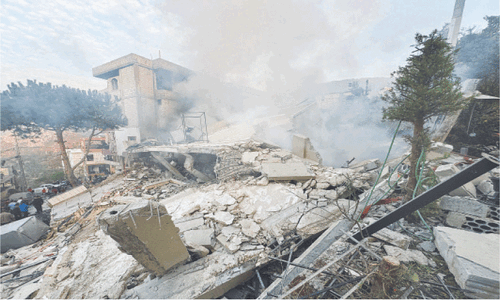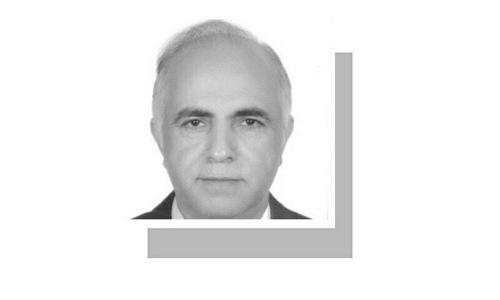THE tragedy is only just beginning to unfold. A people that did not have very much to begin with are faced with seemingly insurmountable challenges as the floodwaters continue to make their way to the south of the country.
Massive swathes of Pakistan have become a watery grave for standing crops, people’s homes and hundreds of thousands of cattle. The death toll has crossed 1,200.
One of the statistics with the most far-reaching consequences is that nearly 900 health facilities have been damaged, 180 of them completely destroyed according to WHO. Not surprisingly, with stagnant water everywhere preventing people from observing even a modicum of hygiene practices, stomach ailments as well as skin infections have become rampant.
According to the Sindh government, in August alone nearly 200,000 cases of acute watery diarrhoea and dysentery had been reported among children in flood-affected areas. Given it will take time to get the ruined health facilities up and running again, this is a humanitarian disaster in the making.
Read: Healthcare during floods
The health infrastructure is already not up to par in many urban centres of Pakistan, and rural areas in general have been extremely underserved. Some parts of Sindh and Balochistan have seen inadequate investment even in primary healthcare facilities that are properly staffed and accessible to the local population.
The inequality in the distribution of healthcare services comes to the fore most starkly when major road accidents occur on intercity highways and many of the injured die for want of timely medical attention.
Meanwhile, income disparities and lack of awareness — and in some cases, cultural practices — have contributed to chronic medical issues among sections of the population. Pakistan has one of the highest prevalence of stunting in the world, with 38pc of children under five years of age affected; in Sindh, the number is almost 50pc. The country also has the second highest global burden of hepatitis C, with 8m of the population infected. After a lull of 15 months, polio cases are also making a comeback with at least 17 having been reported until September.
While Covid-19 did not take as heavy a toll here as it did in some neighbouring countries, thanks to a centralised government response and perhaps some as yet unknown factors, the floods are spawning a certain, and deadly, health crisis. Its dimensions will become known in the weeks and months ahead as the numbers of affected overwhelms available resources.
Published in Dawn, September 5th, 2022


































